








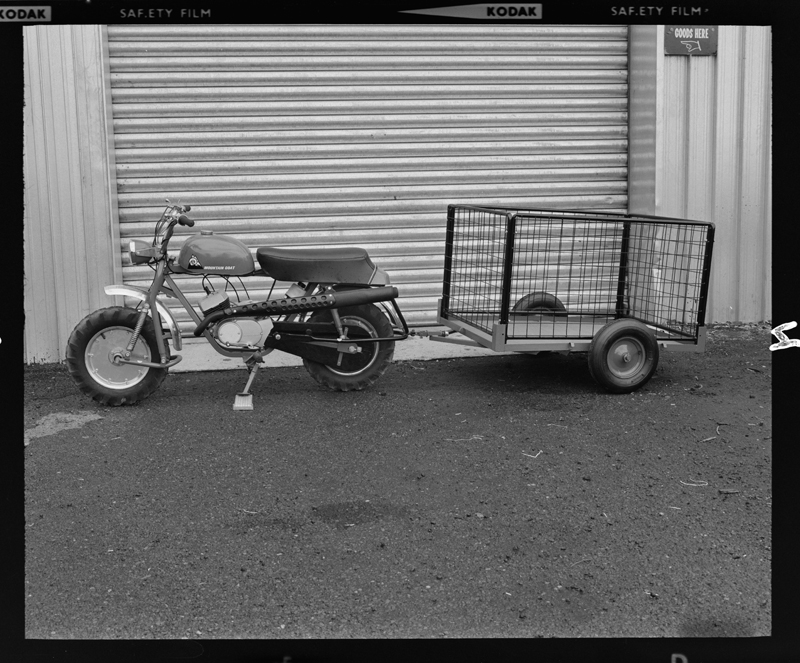


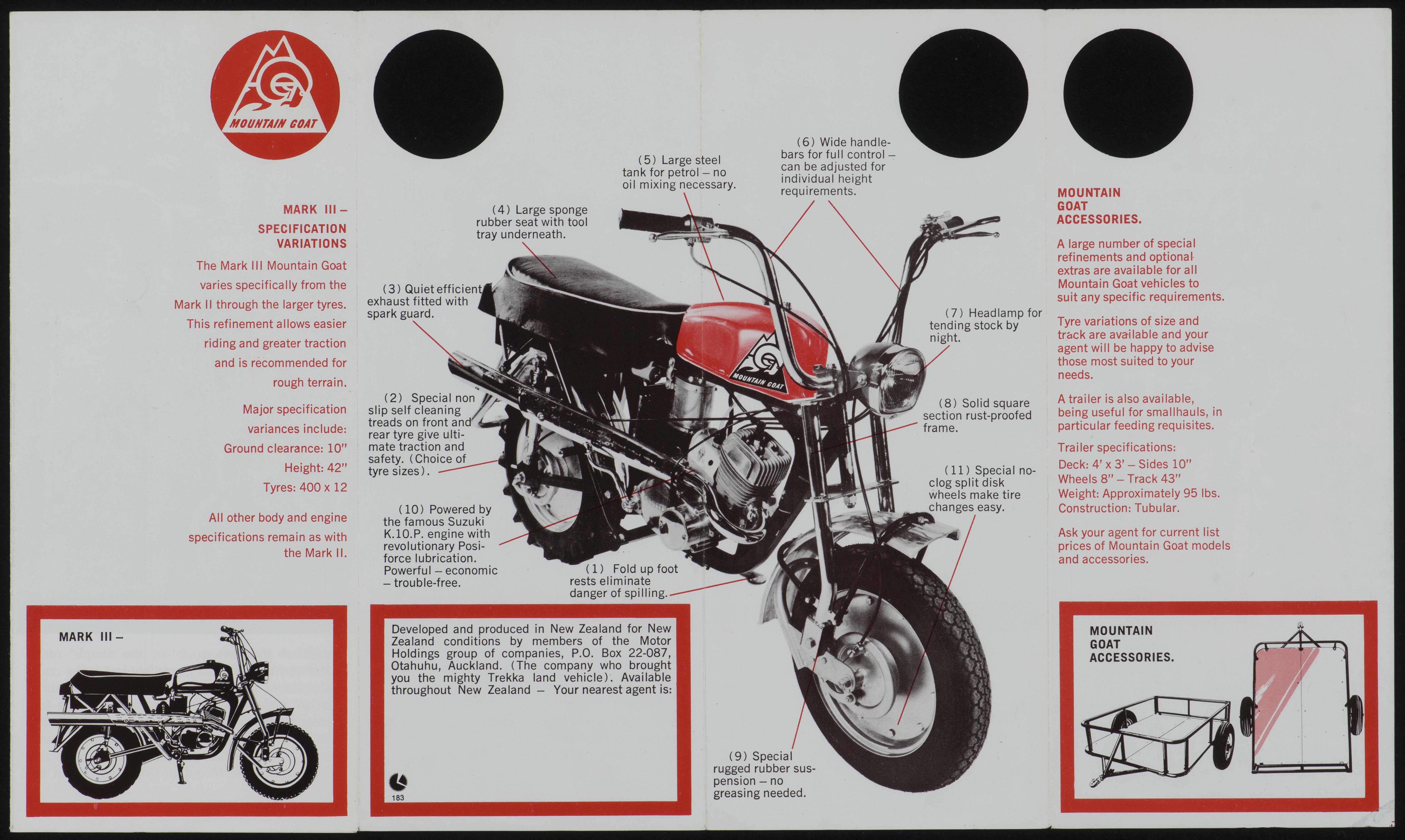
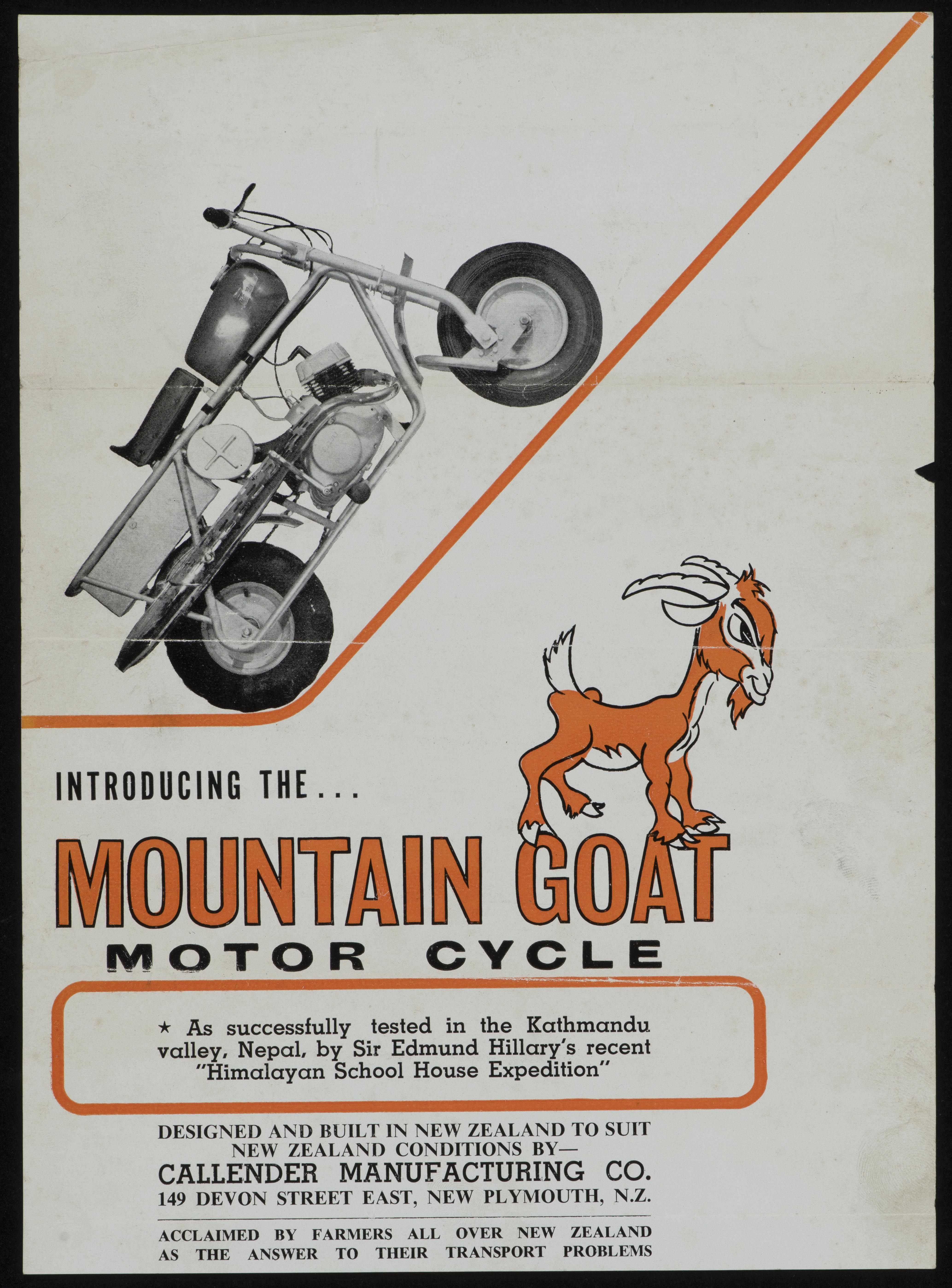
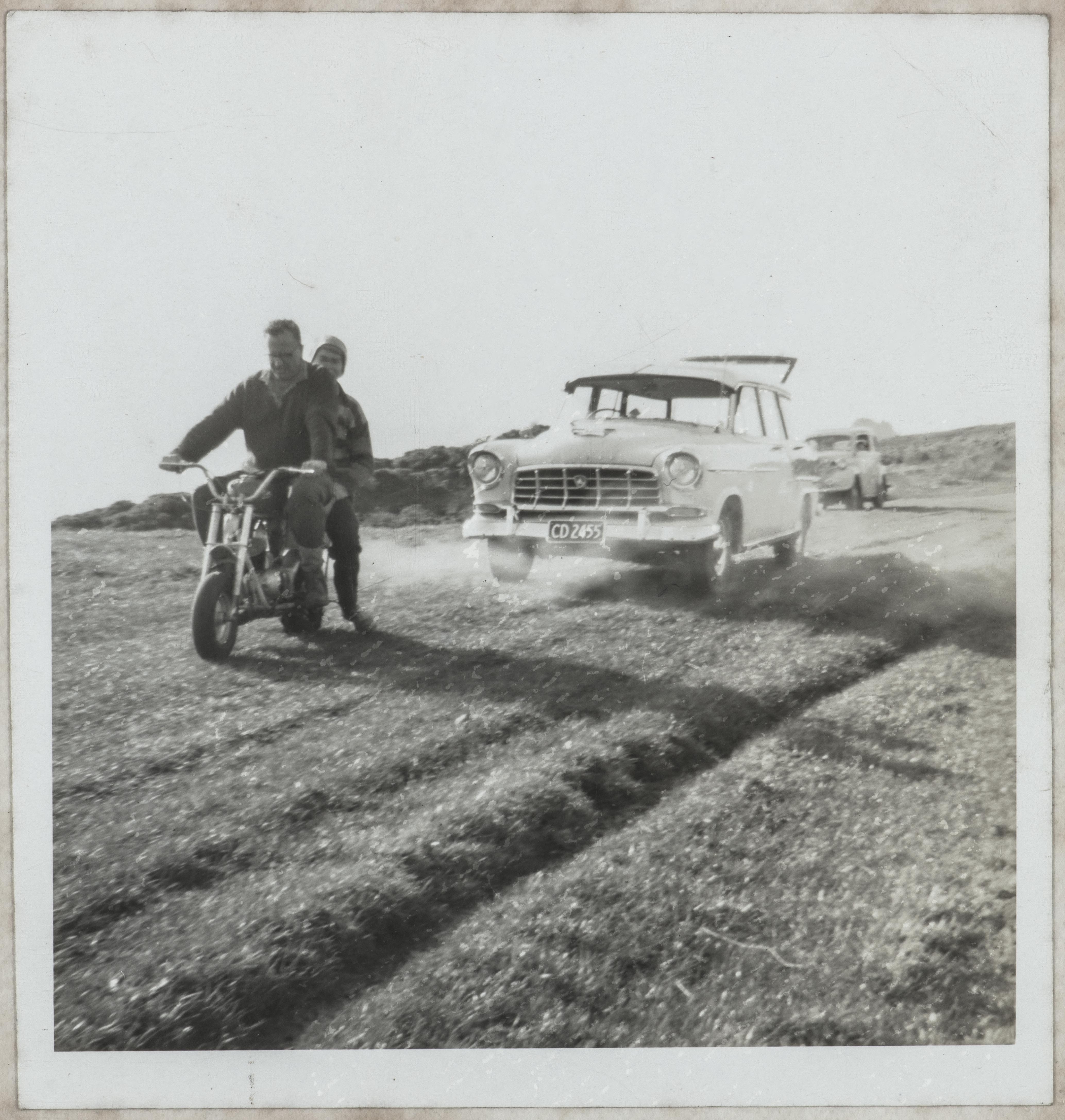
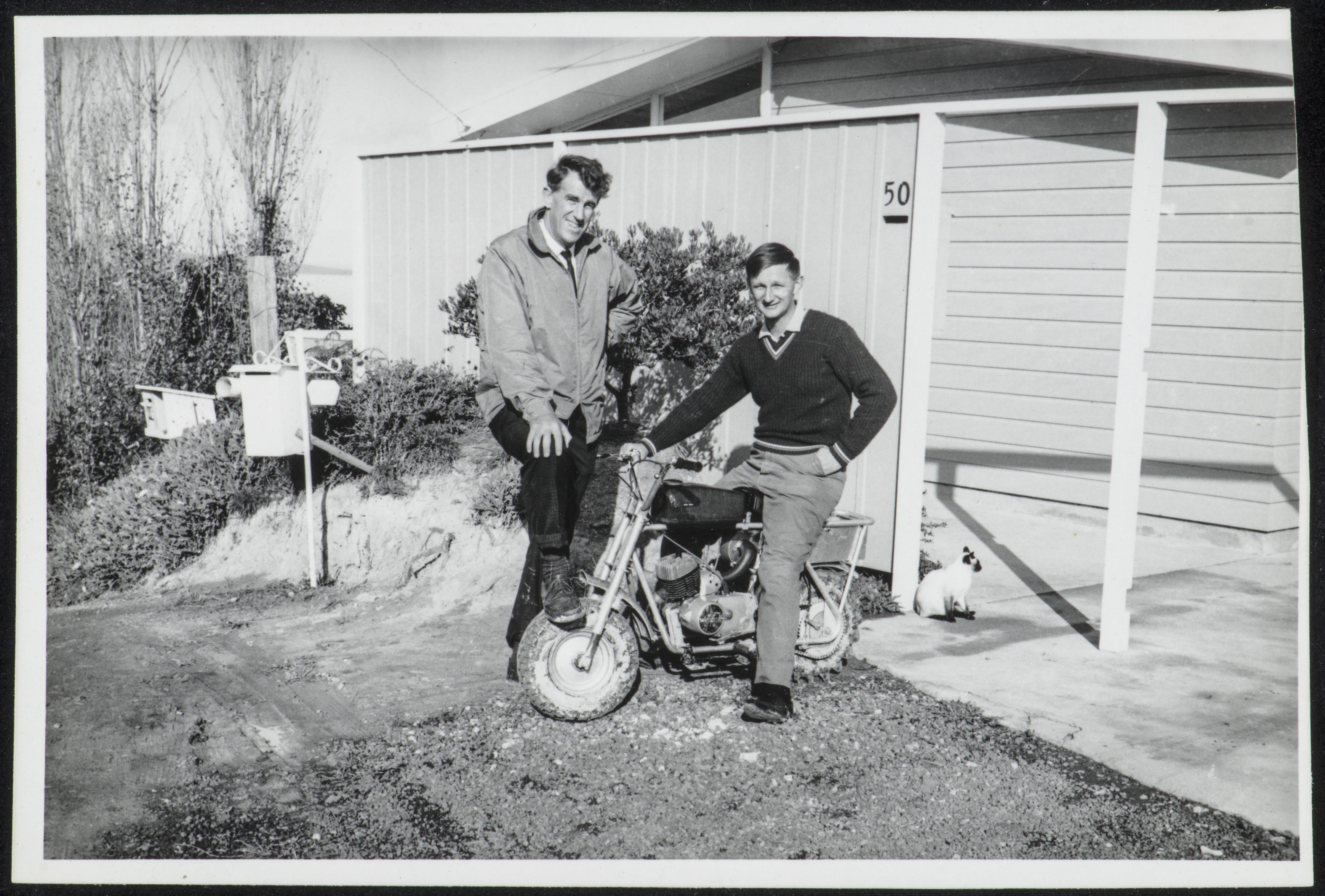
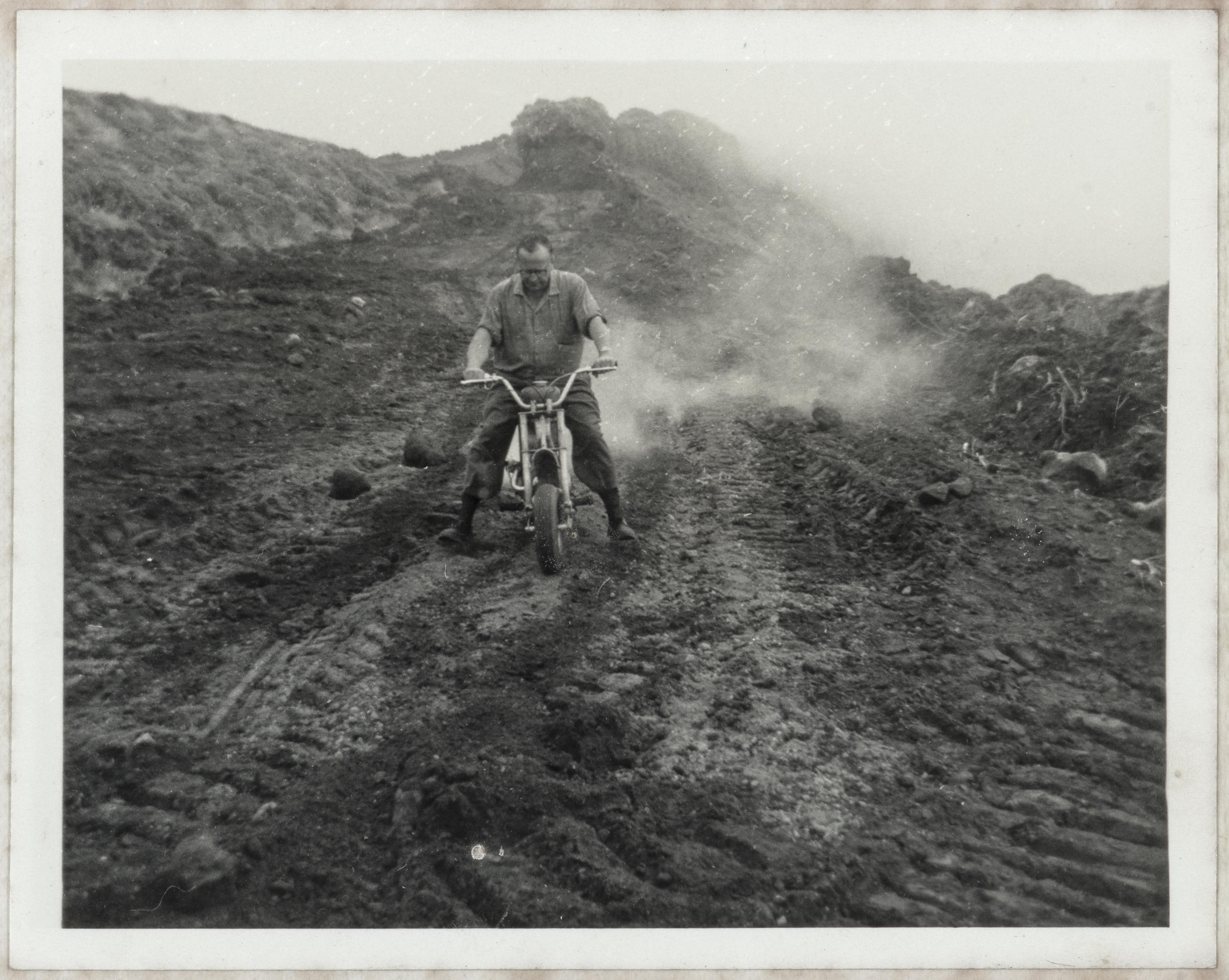
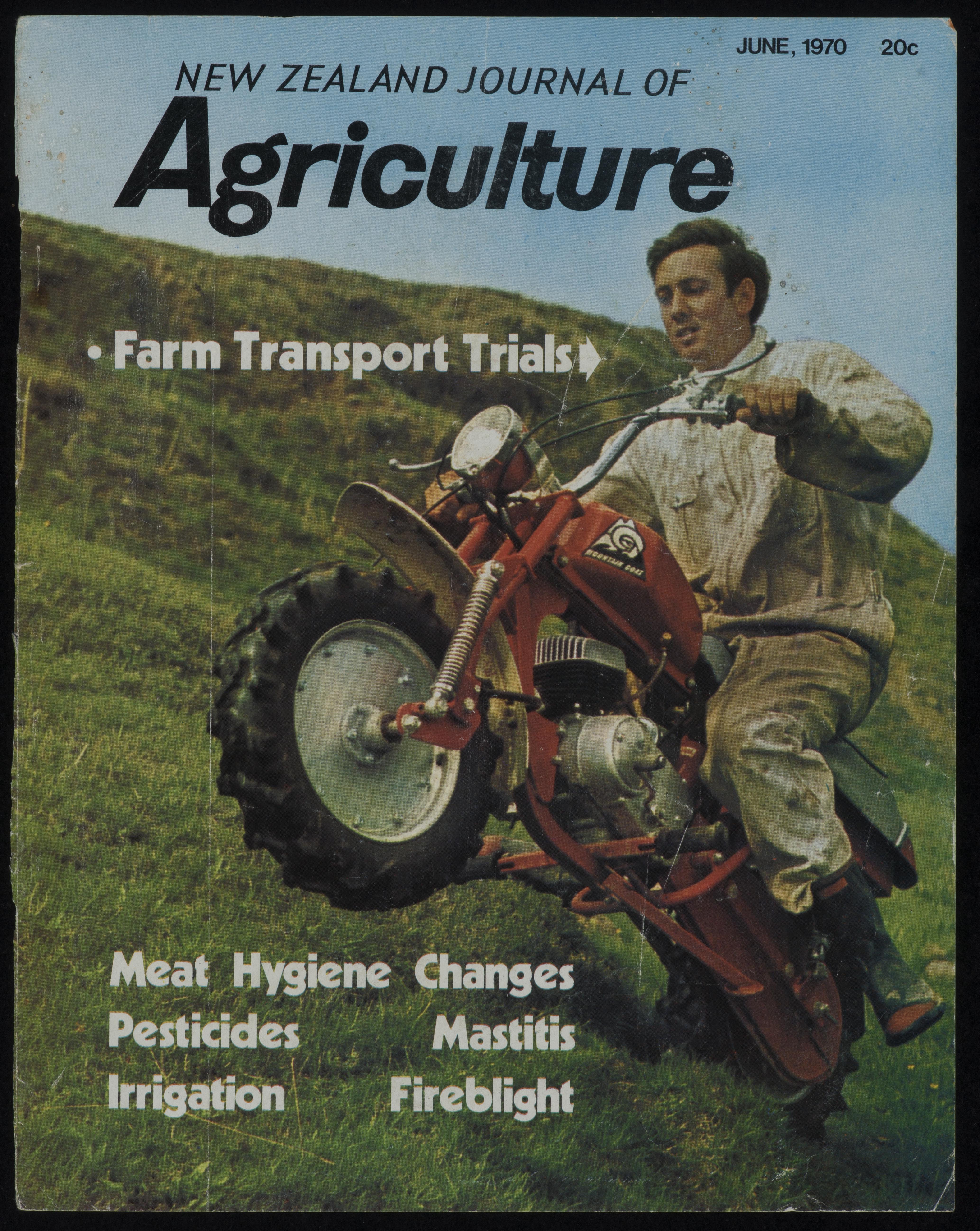
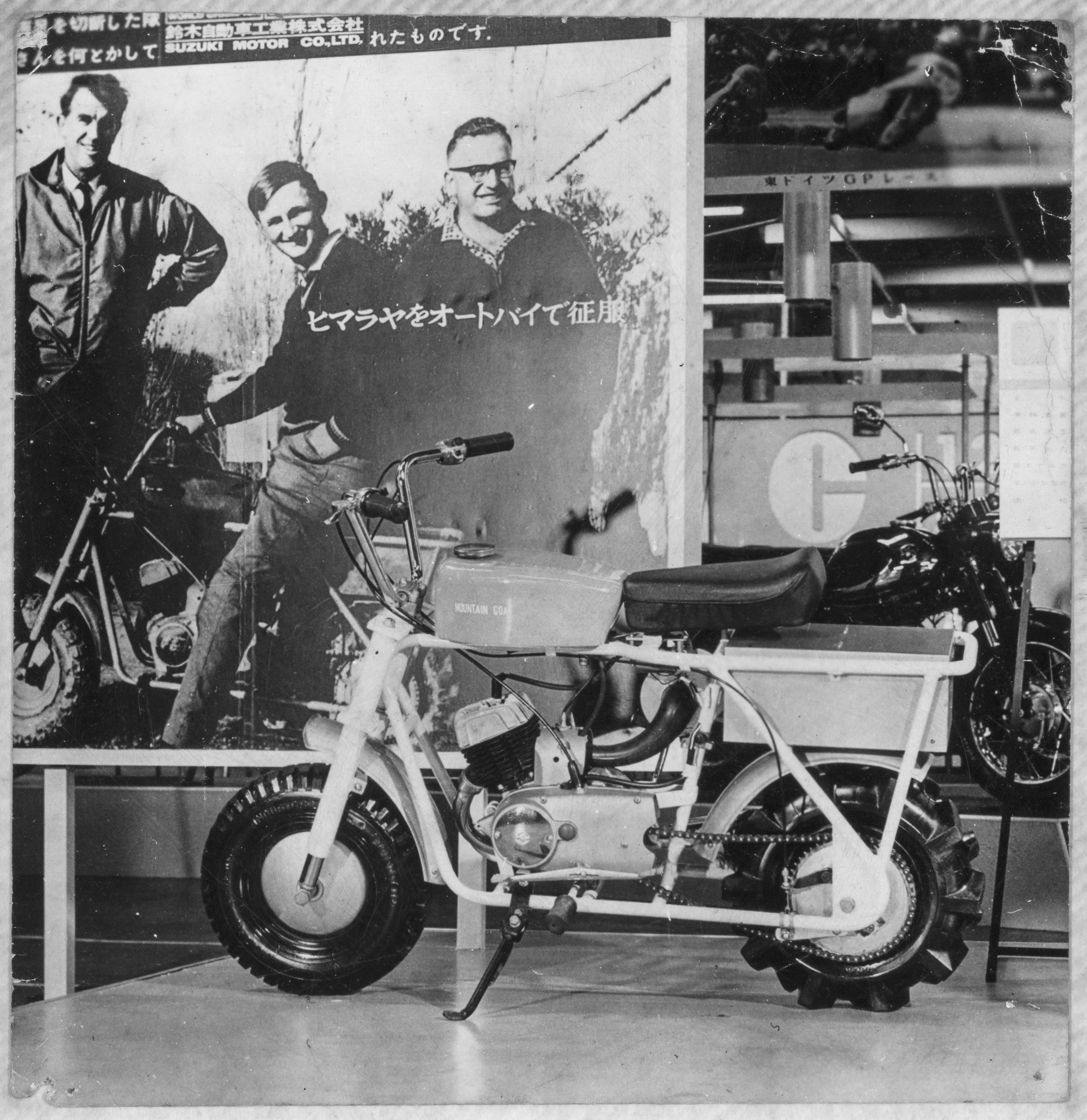
"For Sale – mountain goat, two years old, fitted with lights and tow bar, $200." The advertisement in a Taranaki newspaper had some readers up in arms. "In this enlightened age, it made me sick to read this advertisement. Does the RSPCA know about this?" wrote one animal lover. But she'd got the wrong end of the stick.
It was 1963 and New Plymouth man Johnny Callender had invented the first farm bike in the world. The Mountain Goat was small, tough and could go anywhere – rather like its namesake.
Johnny had seen a gap in the market – a need for a motorbike specifically for farmers. In early 1960s New Zealand many farmers still used horses, especially in hill country. But horses were a thing of the past. The farming industry was crying out for a small motorised vehicle that could handle hills even a horse baulked at.
New Zealand was importing British road bikes and converting them for use on farms. The British imports were too heavy and high-geared - they couldn't handle the rough and rugged country of Taranaki. Johnny and the cow-cocky clients at his New Plymouth motorcycle shop knew there had to be a better way.
The farmers wanted a motorcycle slow enough to tick along behind the cows going to milking, without having to continuously slip the clutch. It had to have enough grunt to climb the steepest hills, be tough enough to handle the hammering of hard farm tracks and light enough to throw on the back of the ute or across a fence. The wheels needed to be discs – spoked wheels just got jammed with sticks and branches. And the back tyre had to have plenty of tread to churn its way through mud and grip to hillsides like glue.
It was a challenge too good to resist. Johnny spent two years tinkering away in his workshop, developing the perfect design. Finally he had a prototype ready to go. The little bike appeared to fill all the criteria. Johnny had deliberately kept the design simple: it had a basic sturdy frame that held a 80cc Suzuki motor; it was light – weighing just under 70 kilograms; there was no paint to chip off; exposed metal was electroplated to avoid rust; the exhaust was upswept and shielded to protect the rider's leg from burns and the bike had a low centre of gravity that made it easy to ride in steep country.
The four-speed gearbox had a very low first gear, allowing a farmer to putter along at walking pace behind stock. But it was no slow poke, the little bike could zip along at a top speed of 50 kilometres. It had plenty of grip – the big fat back wheel had come from a rota hoe. Johnny had even designed a new fuel tank, flat on top and narrow at the sides so it wouldn't snag on the rider's clothes. To get it perfect, he built a mould from native timber.
"He'd come home each night and coat the mould with fibreglass," says son Laurie. "The next morning he'd have a fuel tank ready to take to work with him."
Before the bike could be put on the market it needed to be put through its paces. Was it really as tough as it looked? Laurie can remember many of the tests his father and friends put the bike through, much of it on the slopes of Mount Taranaki. "Dad had the idea of taking a bike to the summit but never actually did. A couple of times they got pretty close though." Laurie went along on some trips and rode the little bike up steep rugged tracks and across streams to help test its durability. "It was all about strength and reliability – the Mountain Goat proved it had all those qualities and more."
Johnny offered his prize prototype bike to Sir Edmund Hillary and Peter Mulgrew to take with them on a 1964 expedition to build a schoolhouse in the Himalayas. Peter Mulgrew had lost his feet to frostbite in a nightmare ordeal on Himalayan mountain Makalu three years previously. The idea was that the bike would help the footless mountaineer to get around and be independent on the expedition, at the same time putting the bike through its paces.
Unfortunately the prototype's fibreglass fuel tank was damaged in transit – the expedition couldn't fix it – so Peter was limited to short bursts before the small amount of fuel the tank could hold ran out. But the little bike got the thumbs up from the mountaineer. "He rode it around the base camp where they were building the schoolhouse" says Laurie. "It was Peter Mulgrew who called the bike Mountain Goat, and it just stuck."
Johnny – real name Cyril John – was always passionate about motorcycles. At age 15 he went and bought a motorbike without his parents’ consent. For three months he kept his machine out of sight from his mum and dad until one day his mother asked him when he was going to bring it home. Three years later he became a founding member of the New Plymouth Motorcycle Club. By this stage he had five motorcycles that he used to race at the first club events at Ōakura. He got a job in a motorcycle shop as an apprentice mechanic and spent his spare time travelling the country racing in events.
In 1951 Johnny turned to midget car driving where he again excelled - winning many trophies and cups. He built his own three-quarter midget - only the second in Taranaki - painting the number 62 on its side, a number that is still associated with the Callender name, says Laurie. "I was only ever brought up as a kid following him around I suppose. I used to follow him everywhere and go to the events. When he was competing at the time trials I used to record his results."
In 1956 Johnny gave up speedway racing after an accident. But he kept sponsoring other drivers. He built many of the first go-carts in New Zealand, and manufactured one called the Kalkart. Johnny didn't just take part in events – he helped run them – he was president of the North Taranaki Motorcycle Club for many years, along with top positions at the New Plymouth Speedway Club and the Auto Cycle Union. "He used to do the announcing at events," says Laurie. "He had his own speaker system that he would take to the speedway and other events to do the calling."
Johnny bought his own business, Callender Motorcycles in 1957. His knowledge of motorbikes brought in customers, many who he gave a helping hand if they couldn't pay up front. "In the off season there would be all these guys working in the shop to pay what they owed Dad."
Then in 1963 came that little bike. "Dad was pretty innovative in all sorts of things he did" says Laurie. “The Mountain Goat was probably his first thing – he also did a lot of work for disabled people like hand controls for cars and wheel chairs. He was always helping people out."
Laurie can remember the first assembly line for the Mountain Goat in an old flour store in Devon Street. He used to go along after school and help put the machines together. Johnny aimed at an initial production of 120 machines a year.
Word of the ‘little motorcycle that could’ spread through the agricultural community, newspapers and magazines ran articles on the bike, and Johnny was swamped with orders from farmers around the country. The little bikes were even sent off to Borneo and the New Hebrides.
But then the brakes were put on the project. The only parts of the Mountain Goat that weren't New Zealand made were the Suzuki engine and the brake hub. For those Johnny needed an import licence and there his problems began. New Zealand had strict constraints on imports – a little motorcycle dealer in New Plymouth who wanted to bring in Japanese parts wasn't going to get a warm welcome. New Zealand's ‘difficult foreign exchange position’ was blamed for the lack of licence. Johnny lobbied hard, pointing out that his venture would provide manufacturing jobs and export revenue – but with no luck.
Then something happened. "Dad sent a picture that was taken with him and the two famous explorers and the prototype bike to Suzuki in Japan and they turned it into a giant poster for their stand at the Tokyo Motor Show behind a display of their motorcycles. But they went further than that. From the photo they made an exact replica of the bike and put it on their stand too!"
The thinly disguised industrial espionage gave the New Zealand Government a kick in the pants. If they weren't quick New Zealand was going to be left behind in what could be a lucrative industry.
It was not until 1966 that approval was granted for Johnny to import enough parts to build 120 bikes a year. But by then he'd had enough of battling bureaucrats. Meeting orders from his basic production line became too much of a hassle. So it made sense to sell when Waitara company Motor Components came along with a cheque. As changes were made to the bike, mainly cosmetic, the track between the designer and the manufacturer became fainter, until Johnny no longer received royalty payments.
The new owners had plans to sell up to 1000 Mountain Goats a year, but the Japanese motorcycle industry had beaten them to it. The Suzuki company built its own machine and other Japanese firms were not far behind. Production at the Waitara plant stopped in the 1970s, by which time the Japanese had introduced their version of farm bikes.
Johnny Callender sold his shop and moved to Auckland. He died in 1978. Laurie is immensely proud of his father's achievements, and the 120 Mountain Goats that he sold. But he's not happy with the stress his father had to go through to get a licence. "It was a stressful thing for Dad and was, perhaps, a factor in giving him the heart attack he died of at the age of 50."
The pride of Laurie Callender's motorcycle collection is that first little Mountain Goat. The well-travelled prototype, that kick-started an industry. Although the gene pool has altered over the generations – the agricultural industry owes a lot to the little motorcycle that started it all.
Puke Ariki Heritage Collection: An Oral history with Clive Gavin Ritchie. He talks of his career working in the motor vehicle industry and details the development, testing and features of the Mountain Goat motorcycle.
LinkPlease do not reproduce these images without permission from Puke Ariki.
Contact us for more information or you can order images online here.